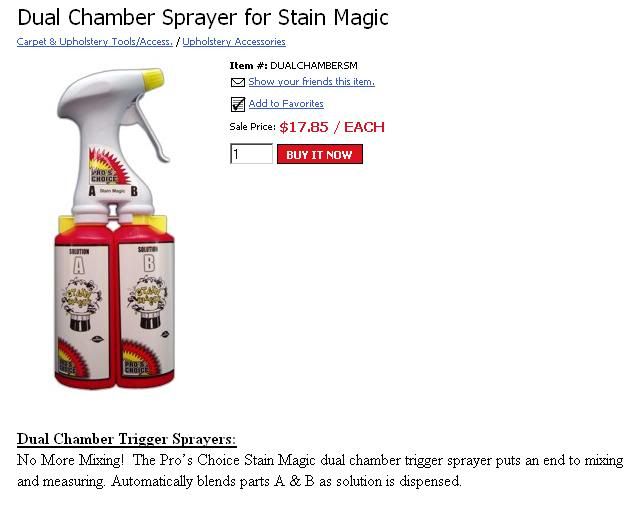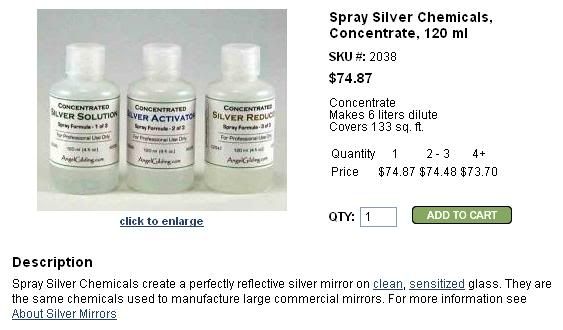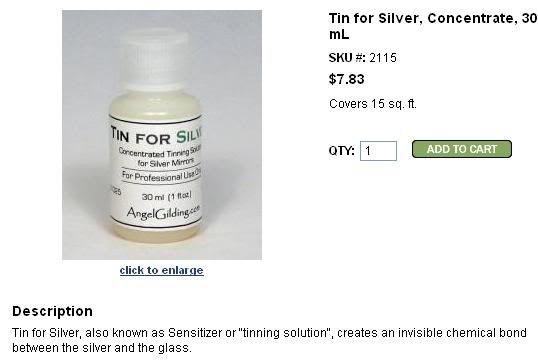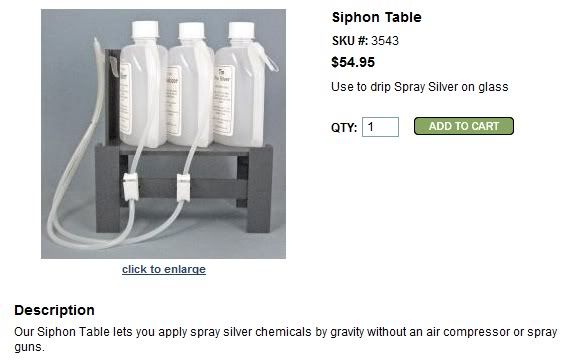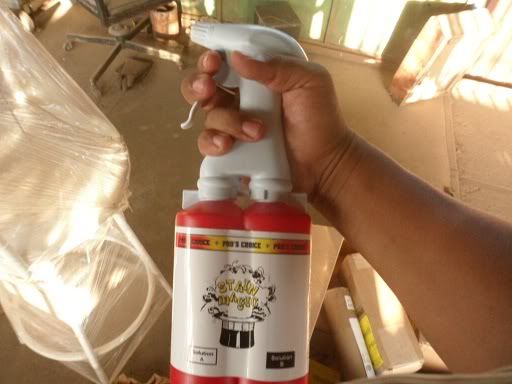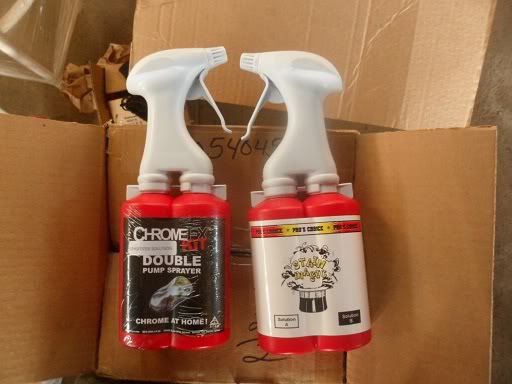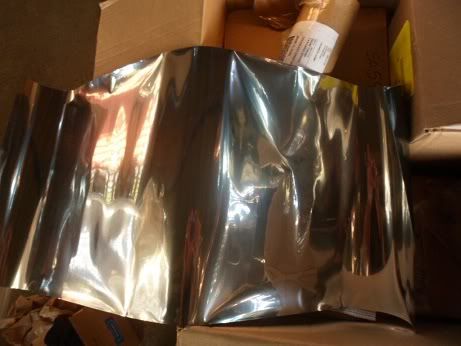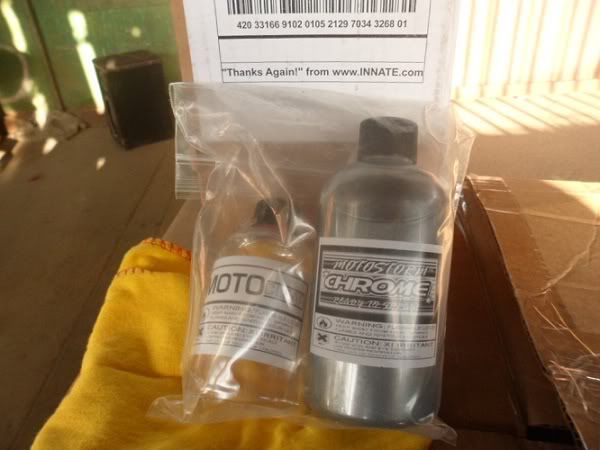that looks nice uh? well its too expencive and it gives you very little to practise.. so what we do about it? we build a similar kit with off the shelf parts
we here the off the shelf alternatives
first we need a hand trigered sprayer that can spray 2 chemicals at the same time(equal amount of chemicals) fortunately for us Alsa is not the owner of this patent either either.
I bought this Dual Chamber from this page
http://www.excelsuppliesonline.com/browse.cfm/dual-chamber-sprayer-for-stain-magic/4,2059.html
ok that was the hand sprayer to spray the Silver to our small plastic surface. the stannous chloride sensitizer solution can be applied by a normal hand sprayer
now to the spray on chrome chemicals... or spray on "Silver" chemicals(that´s what they trully are, a silver diamine complex [Ag(NH3)2]+ reacting to a reducer)
so far this are the least expencive I know of(peacock labs sell mirror chemicals but they are about 60% more expencive and they don´t sell the small quantities we need)
the chemicals I got them from
http://angelgilding.com/SpraySilver.html
silvering chemicals, will cover 133 sq/f(lots for practicing)
the Sensitizer
now to the base coat clear coat.
I have tried just about every kind of paint there is(lacquer, anamel, catalized enamel, urethane, Polyurethane, even some oil base paints) and the best ones are 2k Urethane of a good grade. you can use clear both as basecoat and clear coat. the clear needs to be of a crystalline transparency because if its not, it could dull the silvered parts..
another thing I´ll be testing is the Pour on Silvering, instead of spraying it
here is a video of them doing it..
<iframe src="http://www.youtube.com/embed/6F8Q5yxqy90" allowfullscreen="" width="560" frameborder="0" height="315"></iframe>


